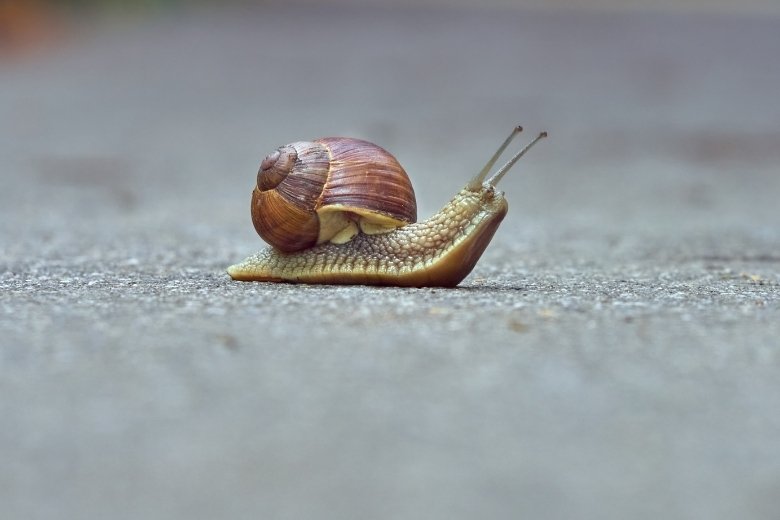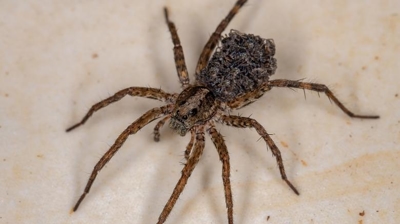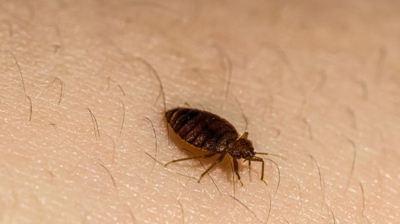
Snails

Are Snails Harmful?
Snails, while fascinating creatures, can pose various harms, particularly in agricultural, ecological, and health contexts. Here are some ways in which snails may be considered harmful:
- Crop Destruction: Snails are notorious for feeding on a wide range of plants, including fruits, vegetables, and ornamental plants. They can cause significant damage to crops by chewing holes in leaves, stems, and flowers, leading to reduced crop yields and compromised plant health.
- Economic Impact: In regions with large agricultural industries, snails can result in substantial financial losses due to their feeding habits. Crops like lettuce, cabbage, and various fruits are particularly vulnerable to snail infestations.
- Parasite Hosts: Some snails, particularly certain species of freshwater snails, are known to host and spread parasitic diseases. A notable example is the transmission of Schistosomiasis, a parasitic infection caused by blood flukes. Snails act as intermediate hosts for the parasites, which can infect humans and animals.
- Lungworm Transmission: In some regions, snails and slugs are vectors for Angiostrongylus species, a type of parasitic worm that can infect mammals. These worms can cause diseases like eosinophilic meningitis in humans and other animals.
- Plant Pathogen Vectors: Snails can also spread fungal and bacterial pathogens to plants, exacerbating plant disease problems. Some pathogens thrive in the moist environments snails inhabit, which can facilitate the spread of infection to crops or other plants.
- Slime and Contamination: Snails can leave behind a trail of slime, which not only creates a mess on surfaces but can also contribute to the degradation of surfaces like garden paths, patios, and outdoor furniture. This slime can be slippery, posing a safety risk in areas with frequent foot traffic.
- Damage to Crops and Lawns: Snails often hide in garden infrastructure, including pots, and can inadvertently spread to new areas. Their movement can cause damage to landscaping, especially in well-maintained gardens or lawns.
While snails play important roles in ecosystems, particularly in decomposing organic matter, their potential to cause harm cannot be overlooked. Managing snail populations, especially in agricultural and human environments, is crucial to minimizing their negative impact.
Learn more: Do Snails Bite? || What Do Snails Eat?
Snail Removal
Controlling and eliminating snails is important for several critical reasons, especially in agricultural, horticultural, and ecological contexts:
- Crop Damage: Snails are notorious for feeding on a wide variety of plants, including vegetables, fruits, ornamental plants, and grains. Their feeding can destroy leaves, stems, roots, and fruits, reducing yield and quality. Even small infestations can lead to significant economic losses, particularly for delicate crops like lettuce, cabbage, and strawberries.
- Spread of Disease and Parasites: Snails can act as vectors for plant pathogens and human or animal parasites. For example, certain freshwater snails carry parasitic worms like Schistosoma, which cause schistosomiasis in humans. In agriculture, snails can carry fungi or bacteria that infect crops, compounding damage.
- Rapid Reproduction: Snails reproduce quickly, often laying hundreds of eggs at a time. This means a small population can escalate into a major infestation in a short period, making early control crucial to prevent widespread damage.
- Competition with Native Species: In non-native environments, invasive snail species can outcompete indigenous mollusks and other wildlife, disrupting local ecosystems. They may consume resources meant for native species or alter the habitat, leading to long-term ecological imbalance.
- Structural and Property Damage: Some terrestrial snails are attracted to damp areas and can damage infrastructure. For example, they may feed on stucco, wood, or garden structures, or leave unsightly slime trails that are difficult to clean.
- Economic Costs: Beyond direct crop losses, uncontrolled snail populations can increase labor and material costs. Farmers, gardeners, and property managers may spend significant time and money on reactive measures rather than preventive management.
Because of these reasons, snail control is not just a matter of aesthetics; it’s a crucial part of protecting crops, public health, native ecosystems, and economic resources. Integrated management strategies—combining environmental controls, barriers, and selective chemical or biological interventions—are often the most effective and sustainable approach.
Learn more: How To Get Rid Of Snails
Snail Control
Hiring our professional pest control for snails offers significant advantages over DIY methods, especially if you are dealing with persistent infestations or large areas. Here’s why:
- Accurate Identification: Our professionals can accurately identify the species of snail, which is crucial because control methods differ between garden snails, aquatic snails, and invasive species. Misidentification can lead to ineffective treatments and wasted effort.
- Targeted Treatment Plans: Our professionals design customized strategies based on the size of the infestation, environment, and seasonal patterns. We know the most effective combination of methods—traps, baits, barriers, and environmental modifications—without overusing chemicals.
- Safe and Environmentally Responsible Control: Many chemical treatments for snails can be toxic to pets, wildlife, and plants. Our pest control experts use products that minimize environmental impact while still being highly effective, ensuring safety for your family, garden, or crops.
- Access to Professional-Grade Tools and Products: Commercial-grade baits, barriers, and molluscicides are generally more potent and effective than over-the-counter options. Our professionals know how to apply these safely, at the right dosage and in the right locations.
- Preventative Measures: Our professionals don’t just eliminate the snails; we implement long-term strategies to prevent re-infestation, such as removing breeding grounds (moist areas, decaying organic matter), installing physical barriers or copper tape, and advising on landscaping changes that reduce snail-friendly habitats.
- Efficiency and Time Savings: Snail infestations can be time-consuming to control, especially in gardens or agricultural settings. Our professionals can quickly reduce the population and save you months of trial-and-error efforts.
- Minimizing Damage: Snails eat plants, seedlings, and even delicate crops, which can be costly for homeowners and farmers. Our prompt professional intervention helps prevent serious damage before it escalates.
Hiring our professional pest control for snails ensures the infestation is handled safely, effectively, and efficiently while providing long-term protection. DIY approaches often fail because snails are highly adaptive, prolific breeders, and treatments must be carefully targeted and timed.
Snail Exterminators
Hiring our local exterminators for snail control provides significant advantages over a national or large chain company, particularly because snails present unique, site-specific challenges:
- Deep Knowledge of Local Species and Habitats: Snail species vary by region, and our local exterminators are familiar with which species are prevalent in the area, their seasonal behaviors, and preferred hiding spots. This expertise allows us to target our treatment methods precisely. A national company will typically use generic methods that are less effective against the species common to your property.
- Customized, Site-Specific Solutions: Snails are highly influenced by microclimates—moisture levels, shade, soil type, and surrounding vegetation. Our local professionals assess your property and implement solutions tailored to your exact conditions. National chains frequently rely on standardized protocols that often ignore these nuances, leading to incomplete or temporary control.
- Integrated Pest Management (IPM) Approach: Our local exterminators combine multiple strategies—mechanical removal, habitat modification recommendations, barriers, and targeted baits—in a way that minimizes environmental impact and maximizes long-term effectiveness. Larger companies often prioritize broad chemical treatments without fully addressing the environmental factors that allow snails to return.
- Faster Response and Follow-Up: Snail infestations can escalate quickly. Our local team can often respond promptly, monitor results frequently, and adjust our treatments immediately. National companies often have scheduling delays and rely on periodic visits, which can let snail populations rebound between treatments.
- Environmental and Community Awareness: Our local exterminators understand the local regulations regarding pesticides and environmentally sensitive areas. We ensure our treatments comply with state and municipal guidelines, protecting your garden, pets, and neighboring properties. National companies often apply blanket solutions that risk collateral damage or violate local codes.
- Cost Efficiency and Accountability: Since our local team operates in your community, we provide competitive pricing, flexible service plans, and personalized attention. Our reputation is directly tied to local referrals, making us more invested in achieving lasting results. In contrast, national chains often have rigid pricing structures and less incentive to ensure complete eradication.
- Ongoing Monitoring and Education: Snail infestations are rarely a one-time issue. Our local professionals provide guidance on preventive measures, like reducing moisture, modifying landscaping, or implementing barriers, which helps prevent future infestations. National companies often focus on a single treatment cycle without offering comprehensive preventive advice.
Snails are not a one-size-fits-all pest. Our local exterminators bring area-specific expertise, adaptability, and personal accountability that national chains cannot match. For a stubborn or recurring snail problem, this difference can be the key to long-term control rather than repeated short-term fixes.
Snail Solutions
Our exterminators use Integrated Pest Management (IPM) to control snails because these mollusks can cause significant damage to gardens, crops, and ornamental plants by feeding on leaves, stems, and seedlings, and their slime trails can create unsightly messes. IPM begins with a thorough inspection to identify areas of snail activity, assess population levels, and determine environmental factors that encourage infestations, such as moisture, dense vegetation, mulch, and shaded or protected areas. Management strategies focus on habitat modification, including reducing excess moisture, removing debris and hiding spots, improving air circulation, and maintaining proper garden hygiene to make environments less favorable for snails. Physical controls, such as barriers, traps, or hand-picking, are combined with targeted, minimal-use molluscicides only when necessary. Ongoing monitoring allows our exterminators to track activity, evaluate the effectiveness of treatments, and prevent reinfestation. By integrating inspection, habitat management, selective control, and monitoring, IPM provides a long-term, environmentally responsible, and effective solution for managing snail populations.
What Do Snails Look Like?
Snails exhibit a wide range of appearances, but there are some common characteristics that can help you identify them. Here is what snails generally look like:
- Shell: The most distinctive feature of a snail is its coiled shell. The shape, size, and color of the shell can vary significantly among different species. Some shells are smooth and glossy, while others may be rough or textured. Snail shells can range from flat to highly conical or spiral in shape.
- Body: The snail's body is soft and elongated, and it typically extends out from the opening of the shell. The body is divided into several parts. Snails have a distinct head that often bears sensory tentacles. Most snails have two pairs of tentacles on their head. The upper pair usually carries the eyes, while the lower pair is used for sensing their environment and detecting chemical cues. Located beneath the tentacles, the mouth is equipped with a radula, a specialized feeding organ that helps snails scrape and ingest food. The muscular foot of a snail is located on its ventral side. This foot is used for crawling and adhering to surfaces. Some snails excrete mucus from their foot to aid in movement.
- Coloration: Snail body coloration can vary widely. They come in shades of brown, gray, white, and even vibrant colors like yellow, red, or blue. The coloration often depends on the species and its environment. Some snails have cryptic colors to blend in with their surroundings, while others may have bright colors as a warning to predators.
- Size: Snail size varies greatly among species. They can range from a few millimeters to several inches in length. The size of the shell and body can be indicative of the species and its age.
- Antennae: Snails may have antennae on their head in addition to the sensory tentacles. These antennae are used for detecting chemicals and vibrations in the environment.
- Respiration: Terrestrial snails may have a small breathing pore (pneumostome) on their body that connects to the lung-like structure inside their shell. This allows them to respire air, while aquatic snails may have gills for underwater respiration.
There is a tremendous diversity of snail species, and their appearance can vary significantly based on their habitat and evolutionary adaptations. Therefore, while these characteristics provide a general description of what snails look like, there can be exceptions and variations among different species.
Where Are Snails Found?
Snails thrive in environments that provide moisture, shelter, and food. You are most likely to encounter them in the following areas:
- Gardens and Landscapes: Snails are common in gardens where there is abundant vegetation, especially in areas with moist soil and dense plant cover. They hide under leaves, mulch, stones, and garden debris during the day. Garden snails in particular are especially drawn to leafy greens, flowers, and decaying plant material.
- Lawns and Turf Areas: Lawns with consistent watering provide the moisture snails need to survive. They are often found in shaded areas under grass clippings or along the edges of garden beds.
- Forests and Wooded Areas: Natural habitats like forests, woodlands, and shaded groves provide ideal conditions for snails. They often hide under logs, fallen leaves, and damp rocks.
- Near Water Sources: Snails are commonly found near ponds, streams, lakes, and marshes where humidity levels are high. Some species, like aquatic snails, live directly in freshwater environments.
- Urban and Suburban Settings: Snails can be found in parks, backyards, and along sidewalks, especially after rain. They may hide in cracks in walls, under planters, or within irrigation systems.
- Agricultural Fields: Snails can be a problem in farms, particularly in crops like lettuce, strawberries, and citrus orchards. They shelter under ground cover and attack plants at night.
- Greenhouses and Nurseries: Controlled environments with high humidity and ample plant matter make greenhouses a prime habitat for snails. They can enter through potted plants and spread quickly if not controlled.
- Underground and Hidden Areas: Snails often burrow into loose soil, hide under compost piles, or rest inside crevices of wood and stone structures.
If you’re dealing with snails as a pest issue, managing moisture, eliminating hiding spots, and using natural deterrents can help keep their populations under control.
Snail Life Cycle
The life cycle of a snail is a fascinating process that includes various stages of development, from hatching as tiny larvae to reaching adulthood. Here's a detailed overview of the typical life cycle of a snail:
- Egg Stage: The life cycle begins with the laying of eggs by adult snails. Snails are hermaphrodites, meaning they have both male and female reproductive organs, but they typically still require a mate for successful reproduction. The eggs are often laid in soil or other suitable substrates, depending on the species. Some snails may lay their eggs in gelatinous masses or attach them to surfaces. Inside the eggs, embryos develop over a period that varies by species and environmental conditions. This stage may last from a few days to several weeks. The eggs are protected from desiccation and predation by the eggshell or gelatinous mass. Once development is complete, the snail embryos hatch from their eggs. They emerge as small, translucent, and fragile juvenile snails.
- Juvenile Stage: Newly hatched snails are referred to as juveniles. They typically have miniature versions of the adult snail's shell and body. During this stage, juvenile snails are vulnerable to predation, and they often feed on microscopic algae, fungi, or other tiny food particles. Snails continue to grow throughout their lives by adding new shell layers. As they grow, their shells become larger and more coiled. The rate of growth can vary significantly among species and is influenced by factors such as food availability and environmental conditions.
- Adult Stage: Snails become sexually mature when they reach a certain size and age, which varies by species. This can take several months to several years. Once mature, snails become capable of reproducing. They still require a mate, even though they are hermaphrodites. Snails engage in mating, during which they exchange sperm with their partner. This sperm is stored internally and can be used to fertilize eggs later.
After mating, the snail will eventually lay eggs, starting the cycle anew. Some species may lay multiple batches of eggs throughout their lives, while others may have a more limited reproductive capacity.
Learn more: What Do Snail Eggs Look Like?

Hear From Our Happy Customers
-
"Very Knowledgeable"
The tech that arrived was courteous, professional, and very knowledgeable. He was Great.
- Uerial I. -
"Professional & Considerate"
I’m pleased with Miche services. Jarvis came today. Professional and considerate. Thank you!
- Judy B. -
"Exceeds Expectations"
I can’t say enough positive things about this company... The tech that came out, Jarvis went above and beyond my expectations. Thank you guys, I will continue using your services.
- Jake M. -
"Great Communication"
Tech was on time, communication was great, and he accommodated my needs.
- Alonzo W. -
"Wonderful Service"
Wonderful service. Jarvis is great. Took care of everything I needed. Thank you!
- Henry P. -
"Fantastic & Patient"
Jarvis was fantastic and patient. He answered my questions with an in-depth explanation and addressed all of my areas of concern. Would love for him to be my assigned tech going forward. Well done!
- Yonnette M.



